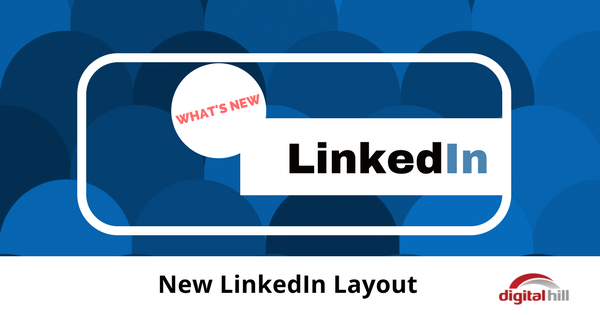The New LinkedIn Layout
 When it comes to social media platforms, there have been big winners, big losers, and those that just sort of lurk in the background.
When it comes to social media platforms, there have been big winners, big losers, and those that just sort of lurk in the background.
With 1 billion+ active users, Facebook is clearly at the head of the pack, while MySpace has virtually vanished, and is definitely in the rear. LinkedIn has, in recent years at least, been somewhere in the middle, with occasional rumors of trouble in digital paradise.
This year, however, LinkedIn seems determined to revamp its image. A big part of that is the new layout and design. Here’s what you need to know.
A Familiar Look and Feel
One of the biggest changes in the LinkedIn platform is actually a move towards copying other platforms. The world’s professional networking platform now looks more like its peers. Conversations, status updates, and similar user-generated content are firmly at the forefront. It feels more familiar, even to newbies, and it seems like a step in the right direction.
Better Metrics
A positive change in the LinkedIn platform is in the metrics, which are improved, and give users more information they can use. Again, this is more in line with what users expect from other platforms. If you’re wondering how LinkedIn Sales Navigator works, it essentially allows users to find and engage with prospects more effectively through advanced search filters, lead recommendations, and CRM integration, making it a powerful tool for sales and marketing professionals.
Simple Messaging
Another move towards twinning with other social media platforms is to make messaging other users simpler. This is a nice change, and again, makes the suited and booted version of the social network a little more user-friendly for everyone.
Streamlined and Familiar
All in all, from the focus on news streams to the layout and the trending topics, the new look LinkedIn looks a lot like Facebook. That’s actually a great thing. While we all know you shouldn’t be sharing snaps of your lunch or the color of your aura on a professional network, it’s nice just to be able to log in and get things done, without having to figure them out.
By following the pack, LinkedIn may well have solved some of their biggest user friendliness problems.
The Next Step?
LinkedIn was built on the concept that people would be willing to pay for premium membership. Their business model has always been centered on this. However, premium membership is not a priority for most average users, so the platform may well be missing their last trick there.
A shift to focus on paid advertising and increased job-related services, while making the rest of the platform free may well be the solution to the company’s rumored financial woes. It will be interesting to see if they copy Facebook’s model here too.
Until then, however, there’s no doubt that this service looks much better, and is much easier to use. Well done LinkedIn!
